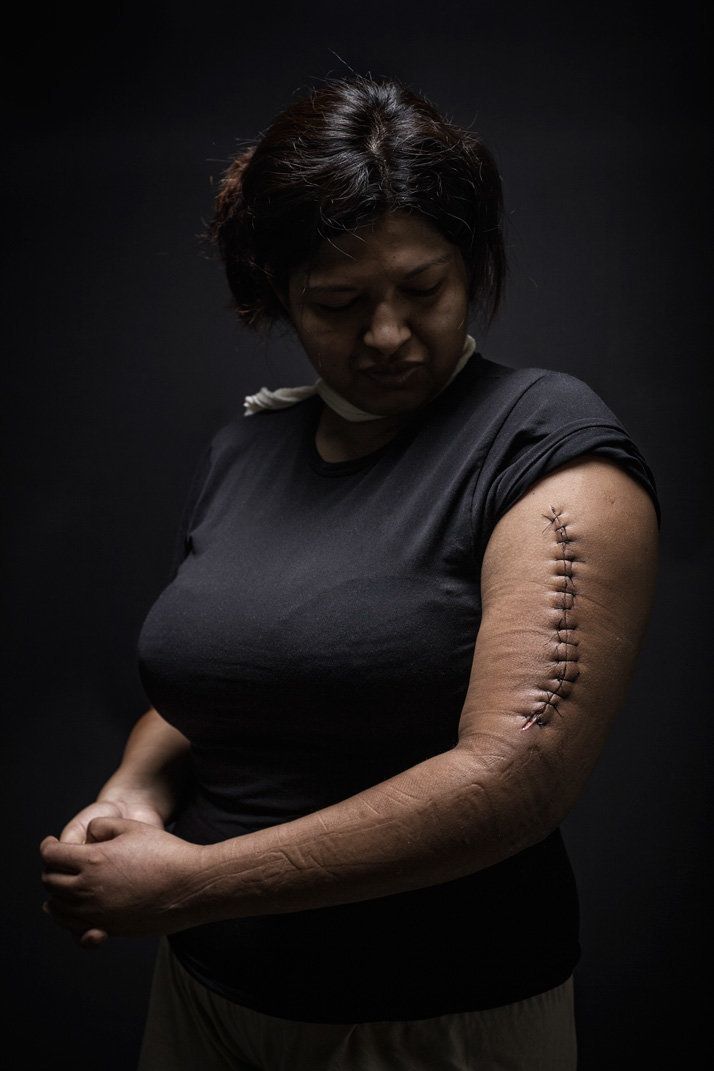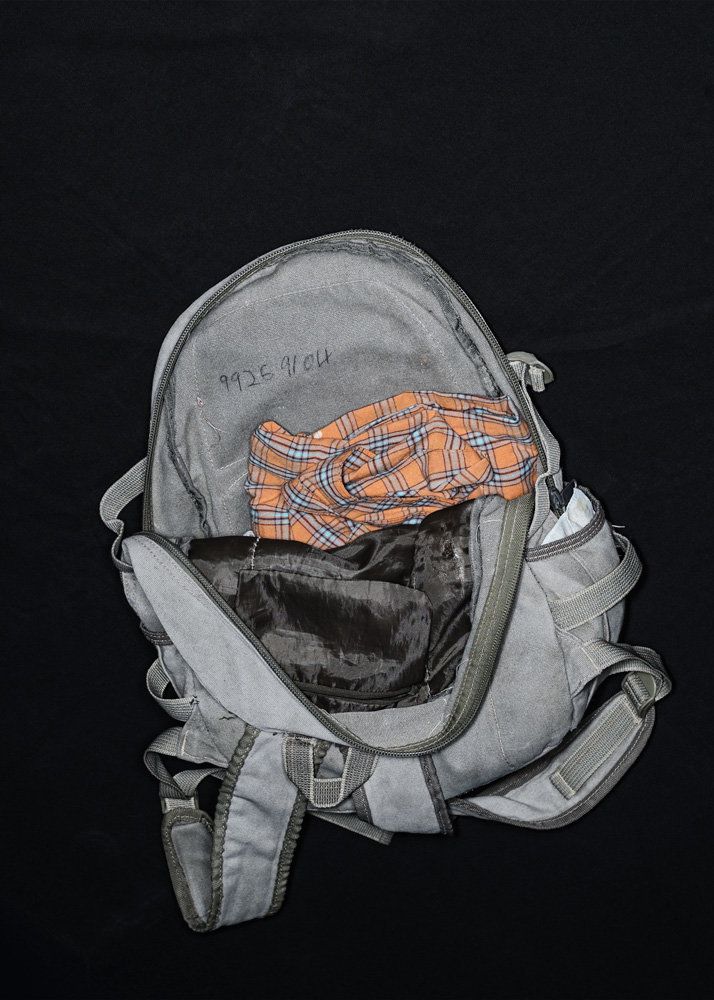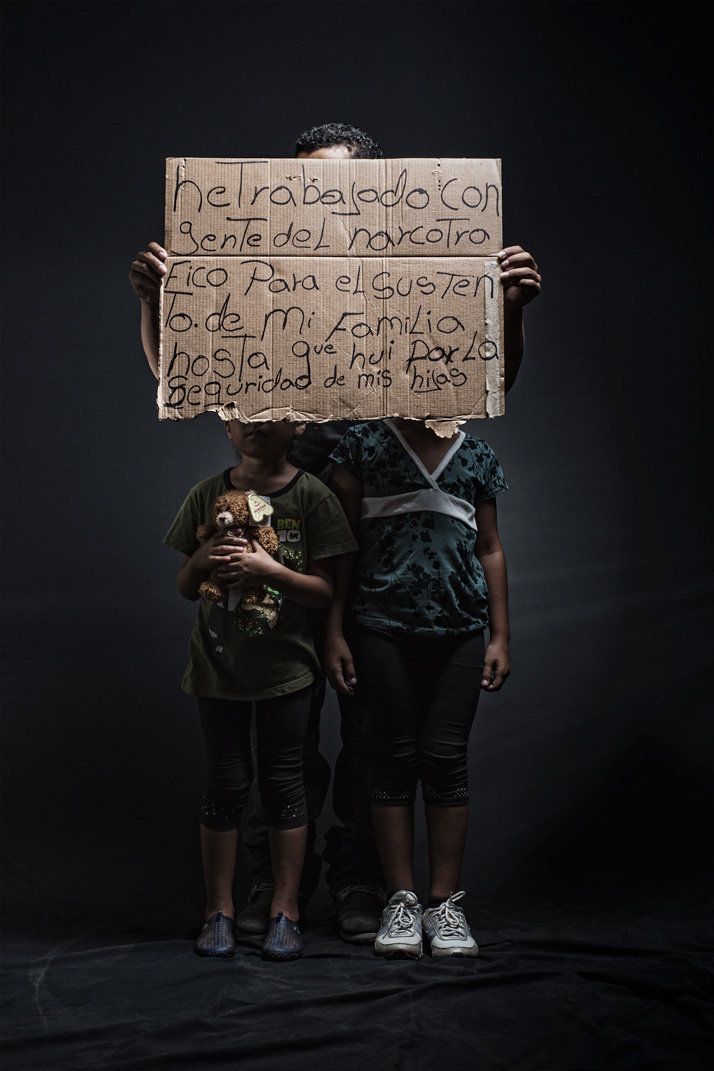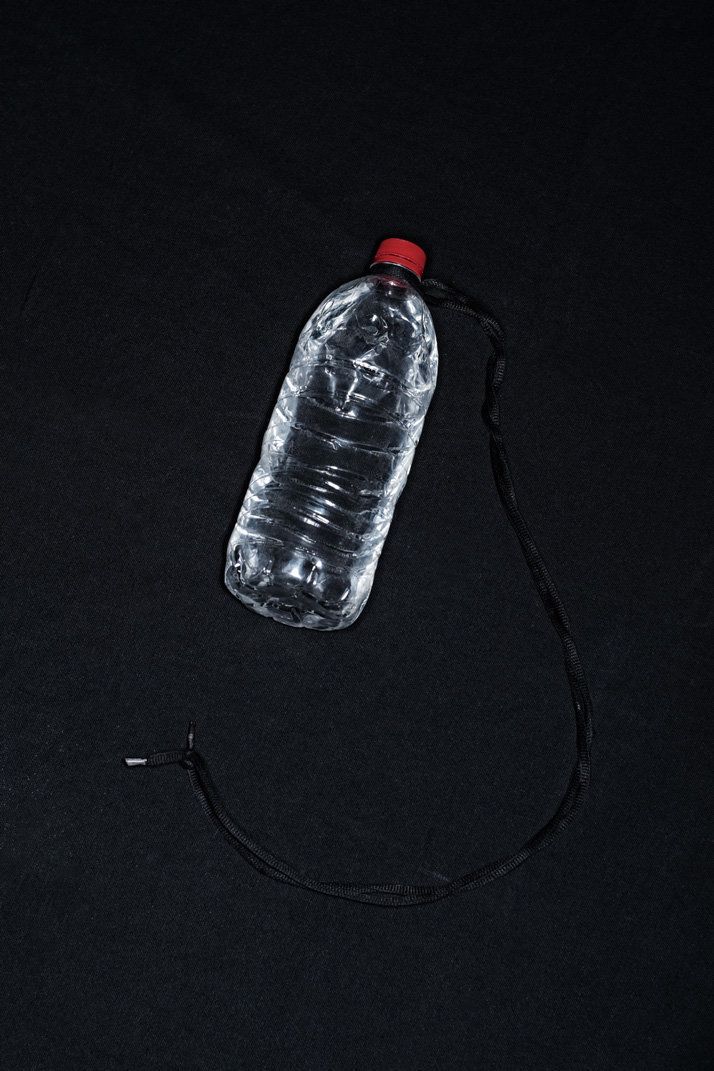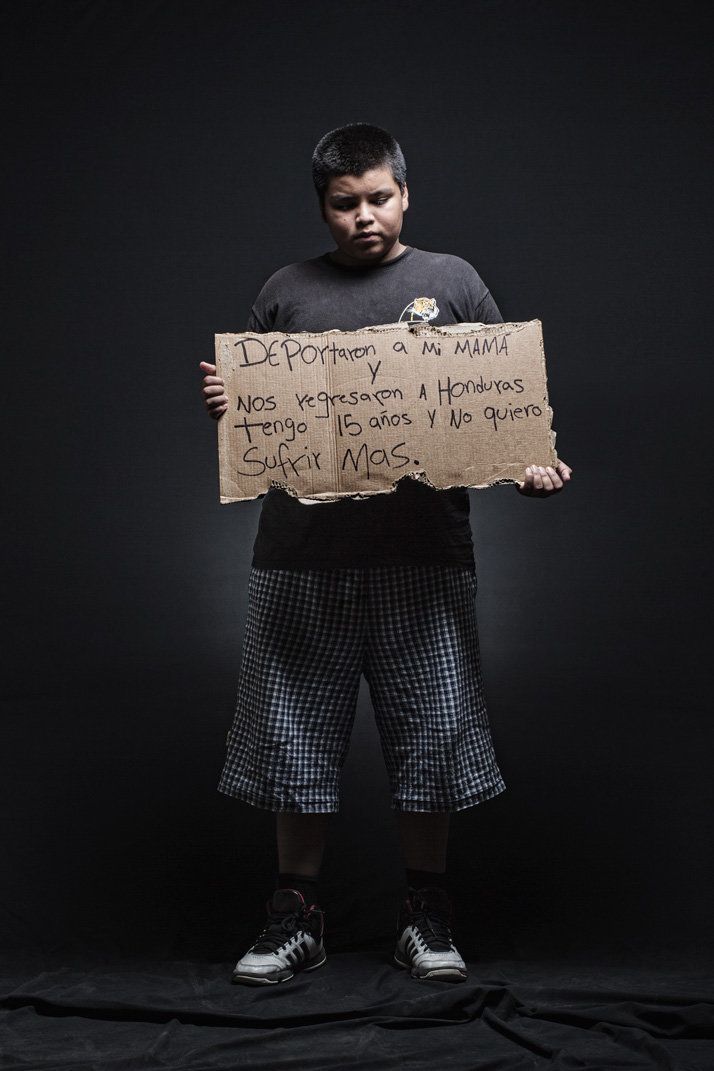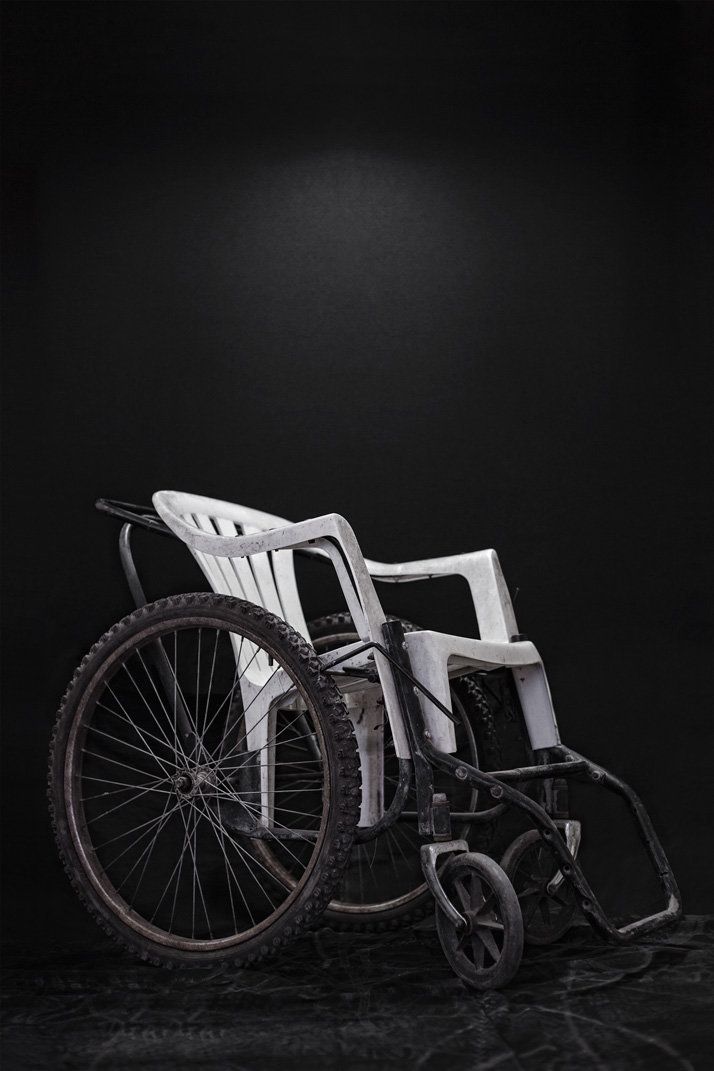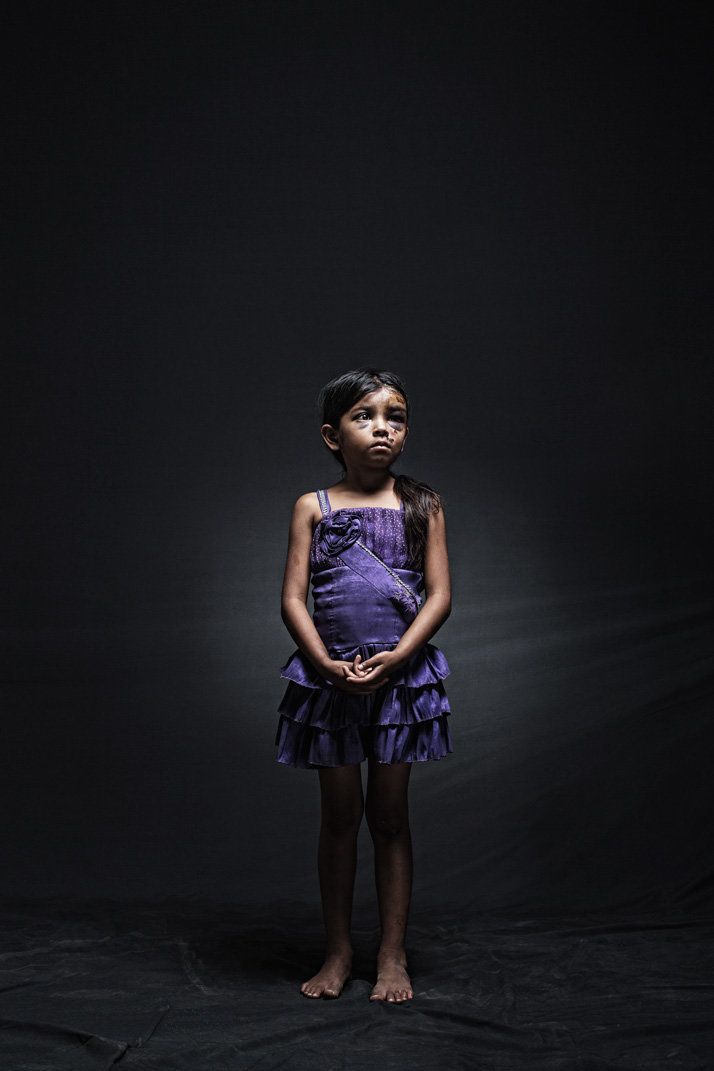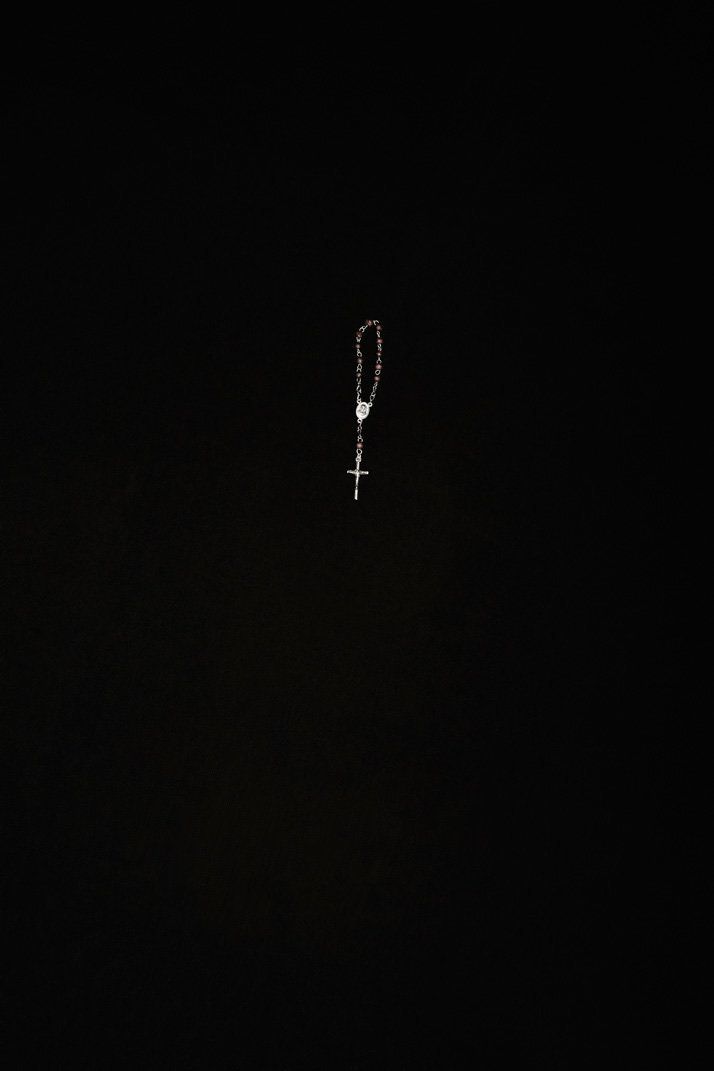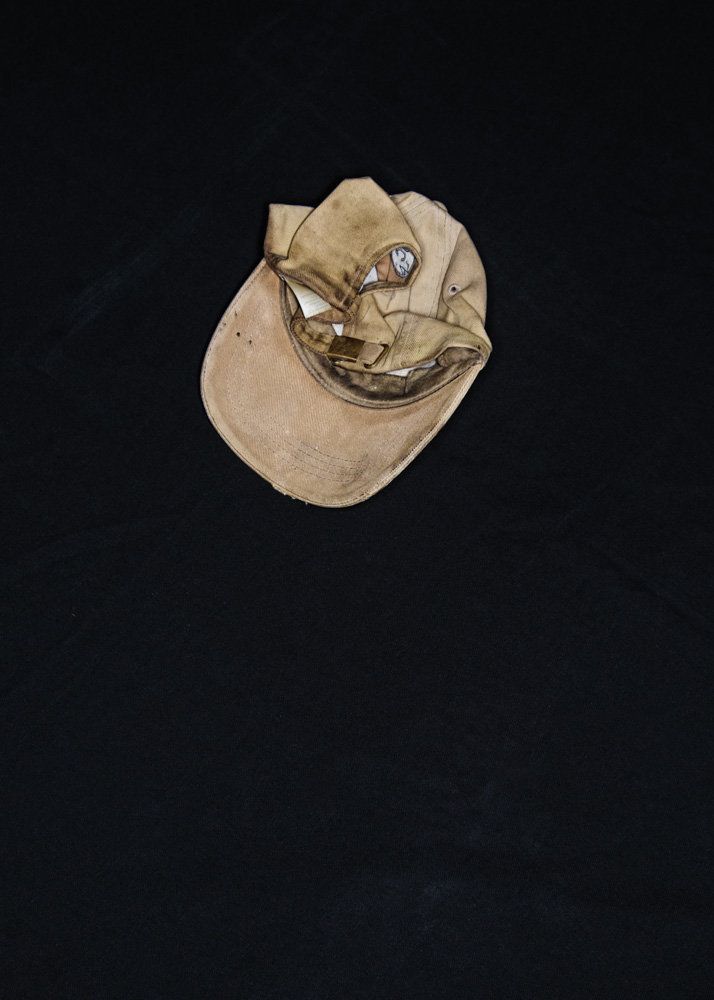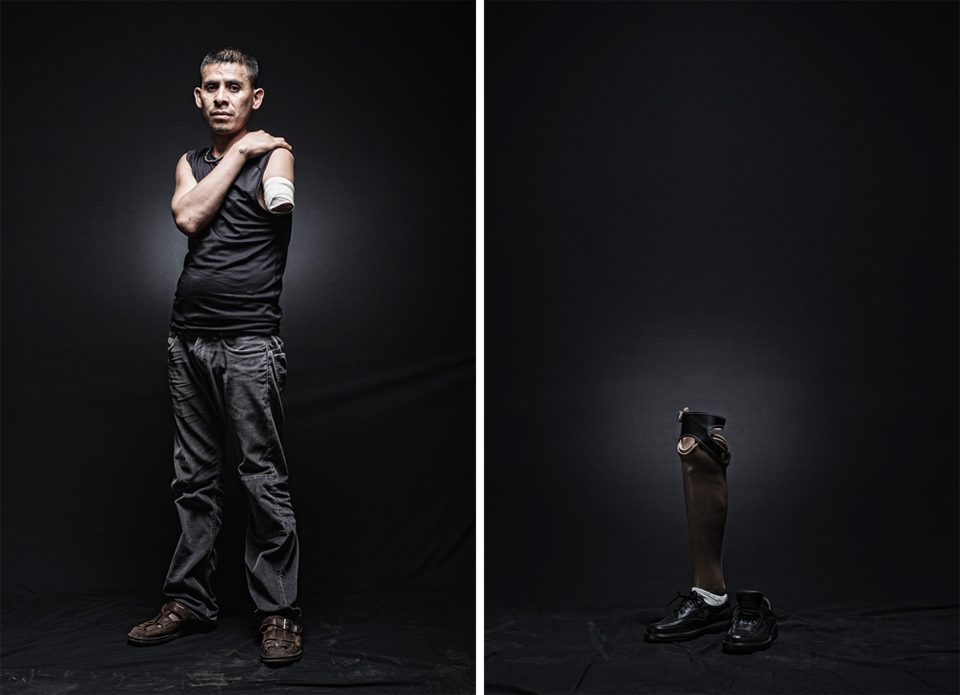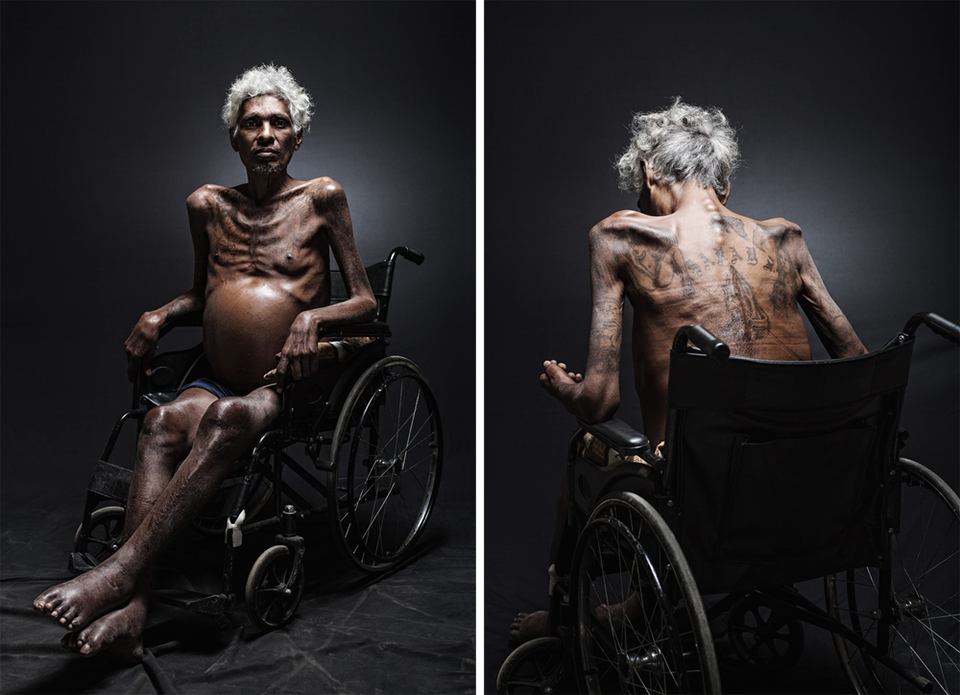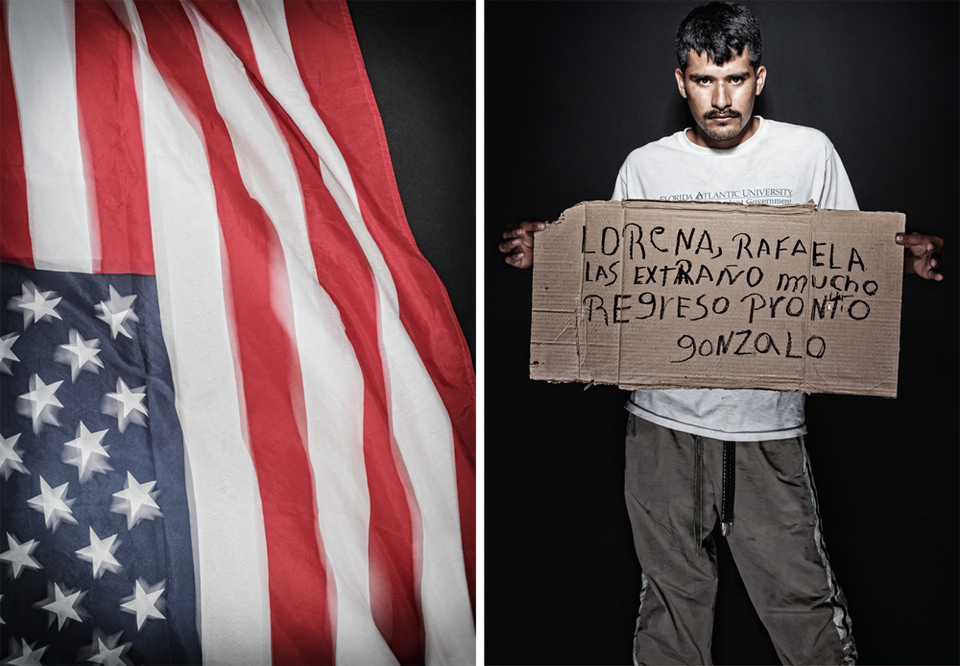Note: Some of the photos below contain graphic imagery.
Those who grew up in the United States are likely familiar with the "American dream," the national ethos that dictates all men are created equal, each endowed with a birthright to life, liberty and the pursuit of happiness.
But for some not born in the country, the mythical American dream does not seem to apply. In his series "The Other Side of the American Dream," photographer Nicola Okin Frioli captures the nightmarish realities faced by migrants attempting to reach the United States by way of Mexico.
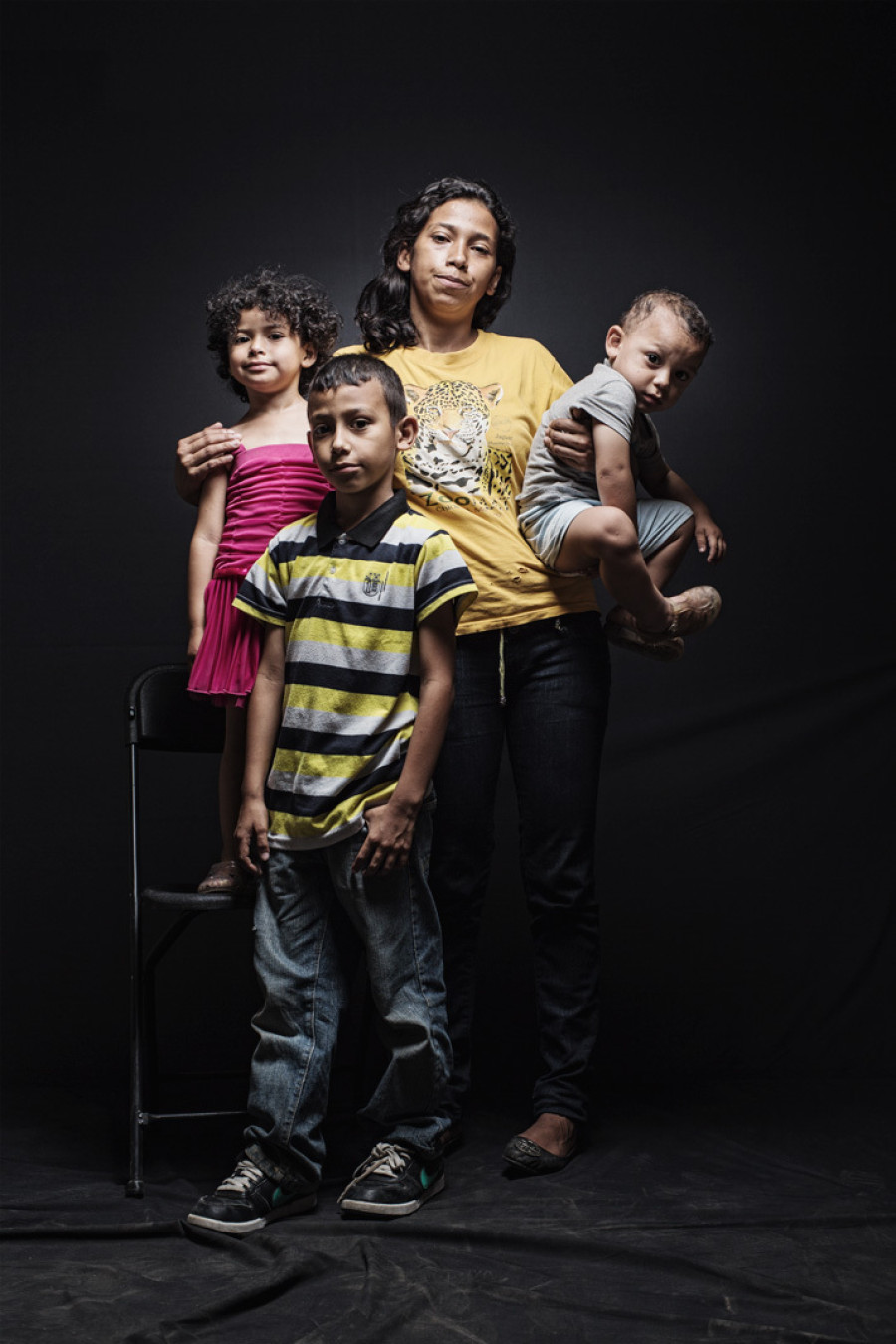
"Wendy fled from Honduras with her three children (Jared of 18 months, Jazmin of three years, and Eduardo of eight) because of the attempted murder she suffered by her husband, a member of the Mara Salvatrucha 18, one of two of the largest gangs in Central America. The complaint filed against her husband for domestic and sexual violence towards her and their three children had no solution in Honduras due to corruption." - Tapachula, Chiapas, 2014.
Frioli's subjects, departing from places like El Salvador, Honduras, Guatemala, and Nicaragua, must pass through Mexico on their journey to the U.S. Whether seeking asylum from gang violence, fleeing from economic failure, attempting to reunite with a beloved family member or simply vying for a brighter future in a new place, the human beings see a glimmer of hope in the dream promised to so many Americans.
Yet their ambitions are all too often tragically cut short by the treacherous journey. Some fall victim to rape and abuse, while others are wounded by local gangs or corrupt officials. And then there are those injured by "The Beast," a cargo train that crosses Mexico with the promise of bringing its inhabitants closer to the U.S., yet often results in crushed limbs and broken bones from the perilous journey. Many riders are known to jump off when confronted with immigration police; oftentimes their arms and legs are mangled beneath the train.
"The message is clear," Frioli explained in an email to The Huffington Post. "To gather all documents and testimonies of complaints and abuses, reflections and discontent against the abuse and corruption of the border authorities about the Central American migration in Mexico. The portraits and touching, but cruel images reveal the physical scars, pain and humiliation of those who at least once, allowed themselves to dream."
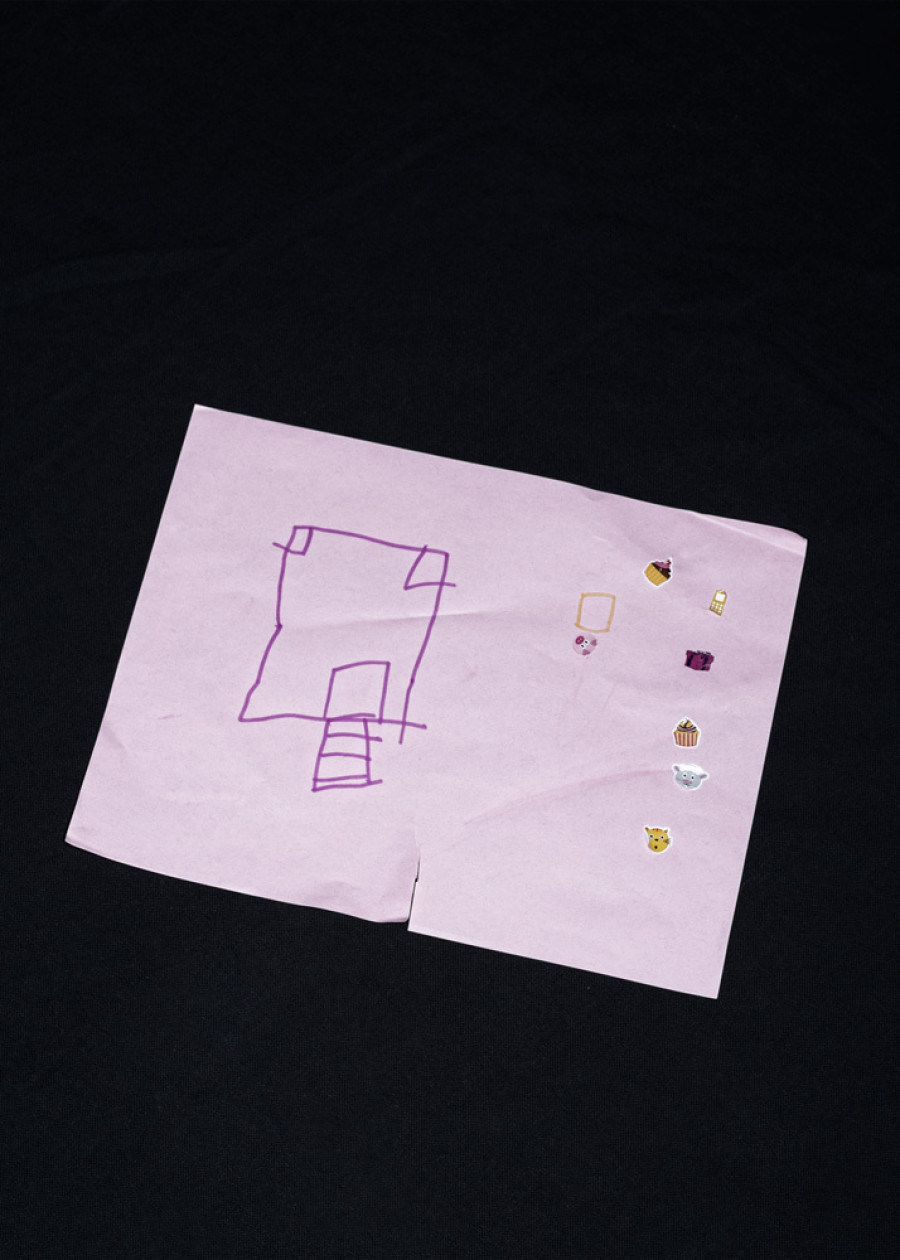
"Grandma's House. Drawing done by a six-year-old Honduran girl. Her greatest desire is to return there with her grandmother." - D.F., Mexico, 2014.
Frioli's subjects, from children to individuals to entire families, are captured before a stark black backdrop, their various bruises and injuries prominently on view. Some carry cardboard signs with messages alluding to their struggles or forgotten dreams. One young man's message to his wife and daughter reads: "Lorena, Rafaela, I miss you a lot. Back soon." Other photos cut out the human element completely, focusing only on select personal possessions carrying intense significance. One features a drawing a six-year-old made of her dream house, another the baseball cap of a man who didn't survive the journey.
Frioli began his photographic project in 2008, after visiting one of Mexico’s Catholic shelters offering aid and medical care to injured migrants, in Tapachula, Chiapas. The project continued for years, and in 2013 he received financial support for the project from Apoyo a las Artes/Fundación Bancomer BBVA.
"It's an effort to document the most dramatic side of Central American migration, all the accidents and mutilations," Frioli continues. "The broken dream of those who cross Mexico with the responsibility of their families and their livelihood, and when not accomplished [face] physical mutilations that could disable them from working the rest of their lives." Despite the horrific troubles most of Frioli's subjects have been forced to endure, they face the camera with strength and resilience. The powerful photographs offer these unseen heroes a chance at dignity, no matter how dehumanizing the experiences they've undergone.
"'The other side of the dream' does not only refer to the search for the 'American dream,'" Frioli explained, "but also the failure of an intent to have a better life, the unfulfilled dream and a future that will never come." See the untold stories of those who never completed their immigration journey below and let us know your thoughts in the comments.
"Mariana, 29 years old, Honduras. She was assaulted during her crossing as an undocumented person through Mexico, with the intent to arrive in the United States. She was pushed by the assailants into a ravine, and was able to avoid an attempted rape. Mariana’s travel companion was beaten when he attempted to defend her. She was moved to a hospital in Tenosique, Tabasco, and then three others where they did not perform the necessary operation. Fifteen days had passed (eight days were in a Hospital in Villahermosa, Tabasco) and the operation became urgent. The last doctor that saw her only requested a new splint and a call to immigration." – Tapachula, Chiapas, 2010.
"The Backpack of Salvador Santo. Salvador Santo, 21, has written inside the phone number of a relative in Honduras. The need to hide information arises to prevent abductions and extortion of family while he crosses Mexico. According to the National System of Public Security (SNSP), abductions reported to the Attorney General in 2013 were more than 3,600 cases compared to 1,259 in 2012." - D.F., Mexico, 2014.
"Anonymous with daughters hidden behind the cardboard to protect their identity. The message says 'I have worked with drug traffickers (in Honduras) to support my family, until I fled for the safety of my children.' In Central America, one of the few jobs available is drug trafficking." - Tapachula, Mexico, 2014.
"Water bottle with loop, owned by Benjamin Chavarrie, 40, originally from El Salvador. The loop serves to carry water while traveling on the roof of the Beast." - D.F., Mexico, 2014.
"Brian Francisco of Honduran origin, born in Canada. Although he and his sister have a Canadian passport, they travel with their undocumented mother in the same conditions. While in Honduras he was assaulted with a gun to his head by a friend's trafficker father. On his board he wrote, 'My mother was deported and they returned us to Honduras. I am 15 and do not want to suffer anymore.'" - Tapachula, Chiapas, 2014.
"Wheelchair, adapted from a plastic garden seat. It is a work donated by the International Organization --
Free Wheelchair Mission -- to to the shelter Jesus el Buen Pastor in Tapachula." - Tapachula, Chiapas, 2008.
"I’m 21, from Guatemala; while in the U.S. my brother, Danilo, and I were deported, and my brother Medardo was killed. In the end, I lost everything and I keep trying." -Ixtepec, Oaxaca, 2011.
"Yenifer, eight, Guatemala. She suffered, along with her 12-year-old sister and 11 other migrants, an automobile accident in Chiapas. The accident was caused by a flat front tire of the truck they boarded. The only person who died was the driver. They wanted to reach the U.S." - Tapachula, Chiapas, 2014.
"The Rosary. It was given to Elsa Santos Mateo (28, Honduras) by her employer in Guatemala to protect her during her journey." -D.F., Mexico, 2014.
“I’m 14 years old and I travel with my brother. I want to arrive to the border line. During the trip on top of the (beast) I had a wasp attack. My name is Yimi” - Ixtepec, Oaxaca, 2011.
"The husband’s hat. The husband of Lydia (Honduras) died two years ago from brain trauma during an impact against the train. It was the only item returned to Lydia when they delivered the body. She is traveling on foot with a caravan of undocumented migrants headed by Father Solalinde from the Albergue Hermanos en el camino." - D.F., Mexico, 2014
"(Pictured left) Armando, El Salvador. His destination was the United States, but he was deported in Baja California while riding in the cargo train crossing Mexico. He wanted to retry the trip as undocumented via Tenosique, Tabasco. This time, while trying to get on the train, he fell and the very train amputated his arm. He awaits the document certifying him as a refugee." - Tapachula, Chiapas, 2014. "(Pictured right) Celso’s prosthesis. Celso, Honduras, 31, victim of an accident while riding the freight train they call the Beast." - Tapachula, Mexico, 2014.
"Teofilo Santos Rivera, 42, Panamá. He was the victim of an attempted mass assault by gang members during the crossing through Mexico. He jumped off the roof of the train, hurting his feet. Also suffers from liver cirrhosis and a cancerous sore on the back. In January 2014, the doctor gave him only 40 days to live. His idea is to reach his children and grandchildren in the U.S. to say goodbye." - Tapachula, Chiapas, 2014.
"(Pictured right) Gonzalo, turned 22 during his trip as an undocumented person in Mexico. His family in Honduras hopes that he’ll make it to the U.S. He left a message on this board for his wife and nine-month-old daughter: 'Lorena, Rafaela, I miss you a lot. Back soon.'" - Ixtepec, Oaxaca, 2011.
Support HuffPost
Our 2024 Coverage Needs You
Your Loyalty Means The World To Us
At HuffPost, we believe that everyone needs high-quality journalism, but we understand that not everyone can afford to pay for expensive news subscriptions. That is why we are committed to providing deeply reported, carefully fact-checked news that is freely accessible to everyone.
Whether you come to HuffPost for updates on the 2024 presidential race, hard-hitting investigations into critical issues facing our country today, or trending stories that make you laugh, we appreciate you. The truth is, news costs money to produce, and we are proud that we have never put our stories behind an expensive paywall.
Would you join us to help keep our stories free for all? Your contribution of as little as $2 will go a long way.
Can't afford to donate? Support HuffPost by creating a free account and log in while you read.
As Americans head to the polls in 2024, the very future of our country is at stake. At HuffPost, we believe that a free press is critical to creating well-informed voters. That's why our journalism is free for everyone, even though other newsrooms retreat behind expensive paywalls.
Our journalists will continue to cover the twists and turns during this historic presidential election. With your help, we'll bring you hard-hitting investigations, well-researched analysis and timely takes you can't find elsewhere. Reporting in this current political climate is a responsibility we do not take lightly, and we thank you for your support.
Contribute as little as $2 to keep our news free for all.
Can't afford to donate? Support HuffPost by creating a free account and log in while you read.
Dear HuffPost Reader
Thank you for your past contribution to HuffPost. We are sincerely grateful for readers like you who help us ensure that we can keep our journalism free for everyone.
The stakes are high this year, and our 2024 coverage could use continued support. Would you consider becoming a regular HuffPost contributor?
Dear HuffPost Reader
Thank you for your past contribution to HuffPost. We are sincerely grateful for readers like you who help us ensure that we can keep our journalism free for everyone.
The stakes are high this year, and our 2024 coverage could use continued support. If circumstances have changed since you last contributed, we hope you’ll consider contributing to HuffPost once more.
Already contributed? Log in to hide these messages.


